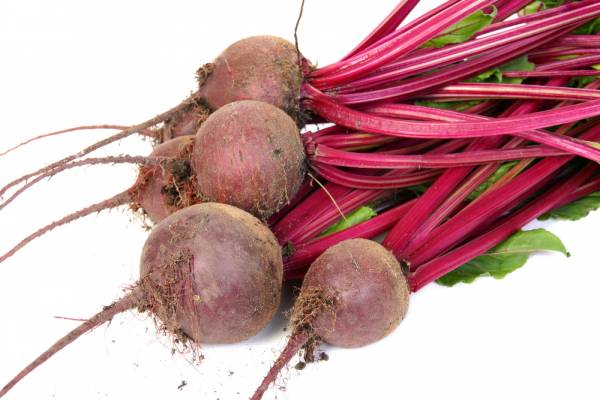Nitric oxide (NO) is a molecule our body produces to help cells communicate by transmitting signals through the entire body. NO can be naturally increased through exercise. When the heart pumps harder to supply the working muscles, the lining of the arteries releases NO to relax and widen the vessel wall. Another method of increasing NO is through diet by ingesting the amino acids L-arginine and L-citrulline.
Increasing NO Through Supplementation
I originally started looking into NO after reading some reviews on a particular supplement. This product was designed to increase nitric oxide by combining 3,000mg of L-arginine, 100mg L-citrulline, and 50mg of alpha lipoic acid. The supplement came in tablets that you take one to two times daily. It is recommended that you take between 3-5 grams of L-arginine three times a day (for a total of 15g per day) to best support the NO. Together these ingredients provide a quality dietary supplement for anyone wishing to increase NO levels. Other NO supplements are also available in powders and convenient on-the-go drinks.
Increasing NO Through Nutrition
Recently, I have focused on increasing my nitric oxide levels through diet. I enjoy juicing a variety of fruits and vegetables. Lately my go-to vegetable has been spinach. Spinach is a nutritionally dense super food that contains nitrates. In addition to spinach, kale is also high in nitrates, which makes it a good NO booster.
Another NO-dense plants is beetroot. A study done in 2010 at the University of Exeter stated, “Drinking beetroot juice boosts your stamina and could help you exercise for up to 16% longer.” This study suggests that nitrate turning into nitric oxide in the body could aid in performance as well as lower resting blood pressure. Some other foods that will increase nitric oxide levels include pomegranate, watermelon, cranberries, oranges, walnuts, pistachios, salmon, and shrimp.
The Athletic Benefits of an NO-Rich Diet
Increasing NO in your food intake could be beneficial, as it will cause an increase in blood flow and oxygen to the skeletal muscles, which then increases strength and endurance. The general theory behind NO is that the increased blood flow helps to transport blood and nutrients better to these working muscles.
An article published in 2012 by the International Journal of Sport Nutrition and Exercise Metabolism showed the improvement of twelve trained cyclists in a 10km time trial. The six-day dietary nitrate supplementation in these cyclists was reported to reduce pulmonary oxygen uptake during submaximal exercise. Participants were also reported to have increased tolerance to high-intensity work rates.
Nitric oxide has also been shown to be important in several cellular activities. Some of these activities include helping memory and behavior by transmitting information between nerve cells in the brain, assisting the immune system, regulating blood pressure, reducing inflammation, and improving sleep quality.

Buyer Beware of NO Supplements
Many of these supplements that contain NO are blends of multiple ingredients including creatine and caffeine. Many supplements do not list the amount of these ingredients, which can become tricky for athletes involved in professional organizations. American swimmer Jessica Hardy broke two world records, but stepped down from the 2008 USA Olympic Swim Team after she tested positive for clenbuterol, an asthma medication. Turns out she was taking a supplement that did not list clenbuterol on the label, but it did, in fact, contain it.
Conclusion: Why to Focus on Your NO
One the biggest advantages of NO is that you can naturally produce it in your body. By following a solid workout routine combined with foods naturally rich in nitric oxide, many athletes will experience performance benefits, and many other people will experience greater heart health in general.
But one of the disadvantages when it comes to NO is the uncertainty of supplements, especially if you are competing for professional leagues like the Olympics or NCAA. This is an issue I hope to see change in the future with more companies labeling the amounts of ingredients in their products. In the meantime, keep reading your supplement labels and consider bolstering your diet with nitric-oxide-rich foods.
References:
1. “Silent Ischemia and Ischemic Heart Disease.” American Heart Association. Last modified November 12, 2012.
2. “Nitric Oxide.” ExRx. Accessed May 28, 2014.
3. Jones, Andy. “Beetroot juice could help people live more active lives.” Research news, University of Exeter, 2010.
4. “Athletes, Stop Taking Supplements.” Medical Examiner. Last modified July 26, 2012.
5. Murad, Ferid. “Discovery of Some of the Biological Effects of Nitric Oxide and its Role in Cell Signaling.” Bioscience Reports 24 (2004): 452-474. Accessed May 28, 2012. doi:10.1007/s10540-005-2741-8
6. “NO Way: Nitric Oxide Boosters.” Muscle & Fitness. Accessed May 28, 2014.
7. Naomi M. Cermak, Martin J. Gibala, and Luc J.C. van Loon, “Nitrate Supplementation’s Improvement of 10-km Time-Trial Performance in Trained Cyclists,” International Journal of Sport Nutrition and Exercise Metabolism 22 (2012):64-71. Accessed May 28, 2014. doi: unavailable
8. Nutrition Express. “What is nitric oxide and how does it work?” Accessed May 28, 2014.
9. One Result. “Are Pre-Workout Supplements NCAA Legal?” Last modified September 27, 2011.
Photos courtesy of Shutterstock.






